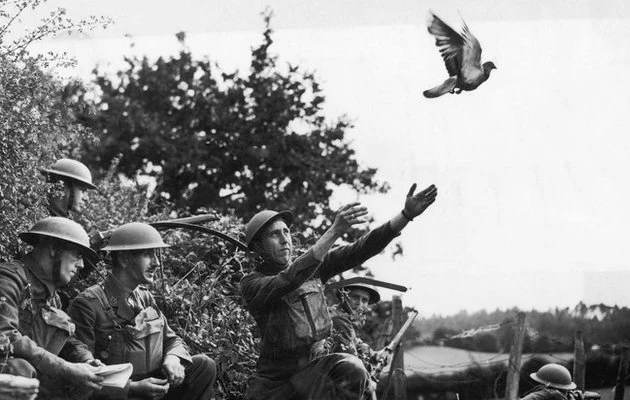While watching the group presentations, I was particularly fascinated by the history of the carrier pigeon. I decided to do some research of my own to learn more about the topic.
I was most fascinated by their heavy use in World War One, as over 100,000 pigeons were used by both sides. They are an often overlooked part of the war but they played an instrumental role, sending messages from the front lines and have over a ninety-five percent success rate of arriving at their desired destination.
The main reason for their popularity was that while telecommunications were preferred for their efficiency, sometimes troops moved past the point where lines were laid. Also, difficult terrain made it impossible to lay said line in some situations.
A notable carrier pigeon was named Cher Ami. In total, he flew telve missions, but the most important came when Major Charles Whittlesey found him and himself surrounded by encroaching German troops. Thinking that all was lost, he sent his only pigeon to ask for backup. Eventually the US troops began supporting him and his men with artillery fire, but it was incorrectly targeted on Whittlesey’s position. He sent Cher Ami back to his commander, but watched his pigeon get shot down. Miraculously, the bird got back up and completed his mission saving over 200 soldiers from certain death.
I think that this is such an interesting part about the first world war, and I think that this should be taught in schools more. Pigeons aren’t necessarily known for their intelligence but this highlights the fact that they are much more intelligent than we give them credit for.
Sources:
http://www.armedforcesmuseum.com/carrier-pigeons-used-during-world-war-i/

No comments:
Post a Comment